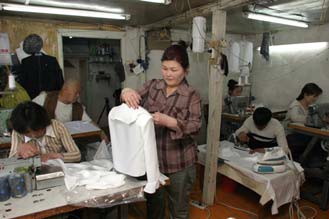
While the microfinance industry has proven its ability to bring financial services to the poor, one key obstacle to the sector’s growth is its own access to financing.
In 2005, Deutsche Bank established the Global Commercial Micro‐finance Consortium, known as the “Consortium,” to address this problem. By promoting the flow of capital from international investors and commercial banks in developing countries to micro‐finance institutions, financing for the sector could remain stable even as donor interest fluctuates.
USAID supported the Consortium with a second loss guarantee on senior notes for up to $15 million. By protecting note holders, the USAID guarantee provided credibility to the facility and attracted a diverse mix of investors, many of whom were investing in the microfinance sector for the first time. USAID’s role of reducing the risk of involvement for investors paid off. By the end of 2010 there were no defaults on payments owed to senior note holders and USAID’s liability ended without claims.
In many developing countries, USAID’s guarantees have served as a mechanism for microfinance institutions to access credit through local banks. The Consortium represents an extension of these efforts. USAID was able to commit a guarantee in only one transaction, which enabled the Consortium to then implement multiple currency loans.
Five years after the Consortium’s creation, $89 million in financing has been provided to 41 microfinance institutions in 24 countries. Nine of these microfinance institutions have since become regulated institutions or banks. On December 31, 2009, the Consortium’s borrower institutions reported actively serving 2.6 million borrowers, including 1.6 million women and 1.4 million rural entrepreneurs.
For the past twenty years, the microfinance industry has primarily functioned as a donor‐financed initiative, but its sustainability depends on private capital. Through the Consortium, the microfinance industry took a major step towards becoming a sustainable industry.







Comment
Make a general inquiry or suggest an improvement.